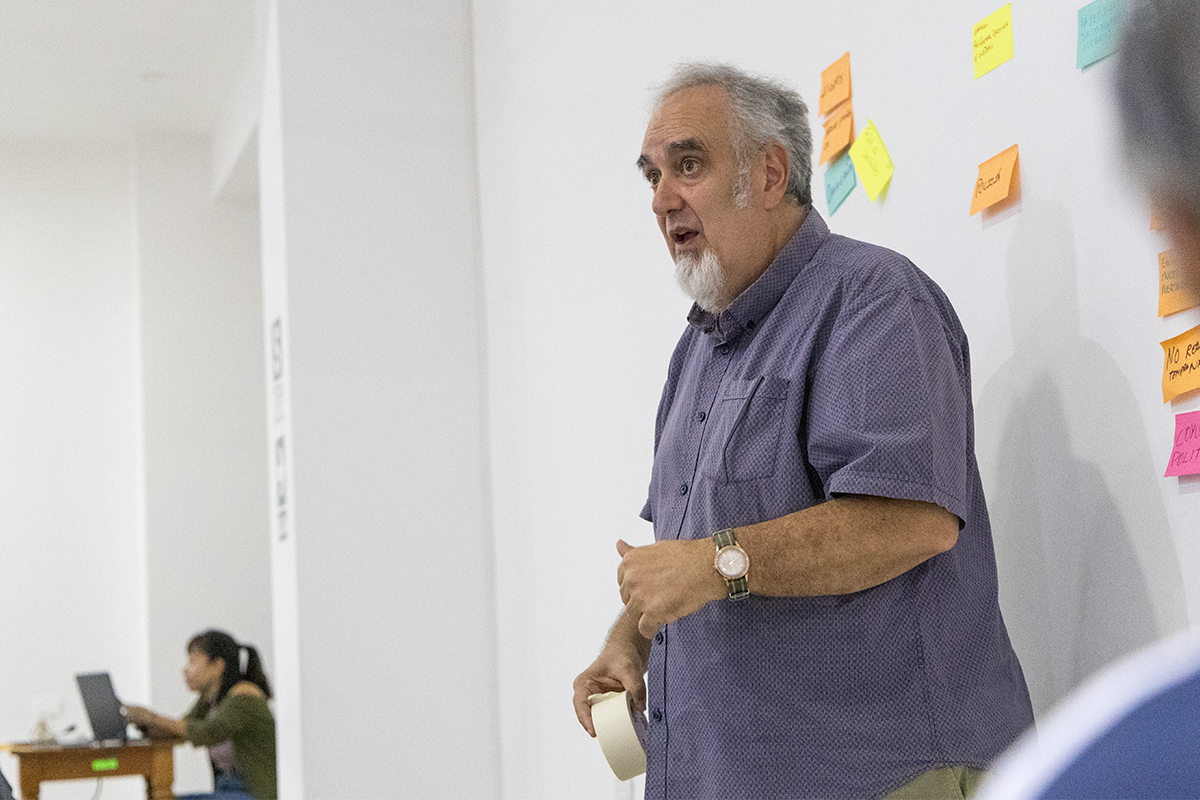Journalists and communicators from Madre de Dios participate in workshop on security measures

A total of 16 journalists and communicators from Madre de Dios participated in the workshop on safety and protection measures organized by the Peruvian Society of Environmental Law (SPDA) on July 5 and 6 in Puerto Maldonado. Through different dynamics, the participants learned the importance of working on risk analysis and prevention to protect themselves from situations that may arise in their work.
Enrique Eguren (Spain), international expert on the protection of human rights defenders, was responsible for conducting the two-day workshop, while Franshesca Gamarra, SPDA legal specialist, gave an introduction on environmental and territorial defenders in Madre de Dios. Using statistical data, the lawyer explained to the participants what happens to environmental defenders in the country, the legal framework that protects them, and the issues that remain to be resolved for their effective protection.
Eguren’s presentation began by explaining why it is essential for journalists and communicators to work for their protection.
In this first part, cases were shown in which the participants analyzed the threats, vulnerabilities and capacities that they may face in the exercise of their work. The first day ended with a group work in which they faced hypothetical cases and answered the following question: What could happen and how would they respond?
On the second day, Eguren continued with practical exercises that allowed the participants to share their experiences and insights on risk situations they have encountered in their work in Madre de Dios. Finally, prevention and response protocols were demonstrated, with presentations from the working groups.
One of the participants, who works as a journalist in the region, highlighted the development that, in addition to the safety and self-protection measures learned, the workshop allowed participants to share opinions about the vulnerabilities they face.
“It’s very interesting for everyone: those of us who go out to cover the news and the communicators who are in the institutions. We were able to develop a good protection plan,” he said. “It was also useful for me that we journalists got together to evaluate how we do the press”, she added.
For her part, a communicator who works for an indigenous organization highlighted the identification of situations that could put her at risk, considering that Madre de Dios is a region with the presence of illegal activities.
“We may not see it, but there are things that go unnoticed. For example, the moment of writing a news story, the choice of a subject, both in a media or within an organization”, he said.
“We always have to be aware of the risks that we might face in some way. In this sense, it seemed to me a good initiative on the part of the SPDA to bring together communicators and journalists to develop integrity, security and protection for ourselves”, he said.
Commenting on the development of the workshop, Silvana Baldovino, Director of the Biodiversity and Indigenous Peoples Program of the SPDA, said that “the protection of those who work in communication is fundamental, especially in regions like Madre de Dios, where there are risks related to illegal activities and environmental conflicts. Collaboration and training in safety measures not only strengthens the protection of journalists and communicators, but also contributes to the defense of human, environmental and territorial rights in the region”.
They propose alternatives
Both the journalist and the communicator, as well as the rest of the participants, agreed on the creation of contact networks with other media or organizations as a protective measure. This strategy was proposed “considering that the region is one of the main regions where illegal activities take place, there is a challenge for organizations and media to have a security protocol in case of any type of threat”.
Situation in Madre de Dios
Mining and drug trafficking have increased in Madre de Dios. A study by the Monitoring the Andean Amazon Project (MAAP) reported that in less than three years, mining has caused the loss of 23,881 hectares of forest in this Amazon region. This area is equivalent to the size of the Lurigancho-Chosica neighborhood, the fourth largest in Metropolitan Lima.
Meanwhile, drug trafficking has increased its presence in Madre de Dios. In early June, a delegation of ambassadors from Norway, Germany, the United Kingdom and the European Union noted the expansion of illicit coca leaf cultivation in the region, in addition to the continued deforestation of the Amazon.
The latest Devida report (2022) showed that Madre de Dios is the region with the highest growth in coca leaf cultivation (274% compared to 2021).
Fact:
- The “Workshop on Security and Protection Measures for Journalists and Communicators in Madre de Dios” was organized by the Biodiversity and Indigenous Peoples Program of the SPDA, as part of the project “Inclusive Protection of Environmental Defenders in the Amazon (PIDDA)”, implemented in collaboration with the International Union for Conservation of Nature in the Netherlands (IUCN-NL), with the support of the French Agency for Development (AFD). The project aims to contribute to the strengthening and application of the protection system for environmental defenders developed in Peru, with an intercultural and gender approach.